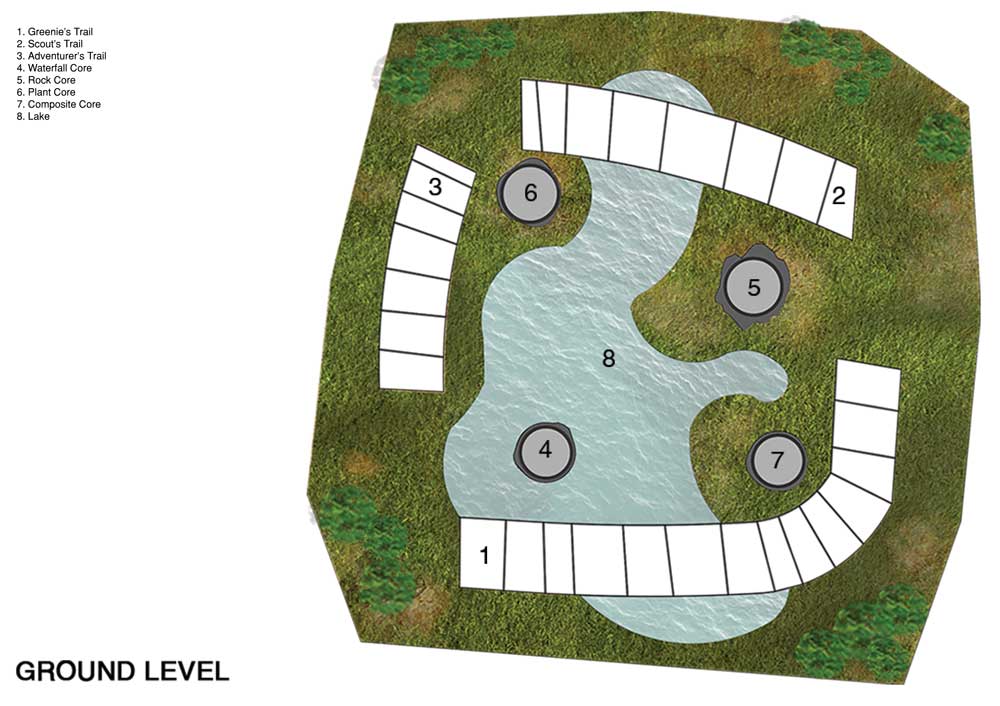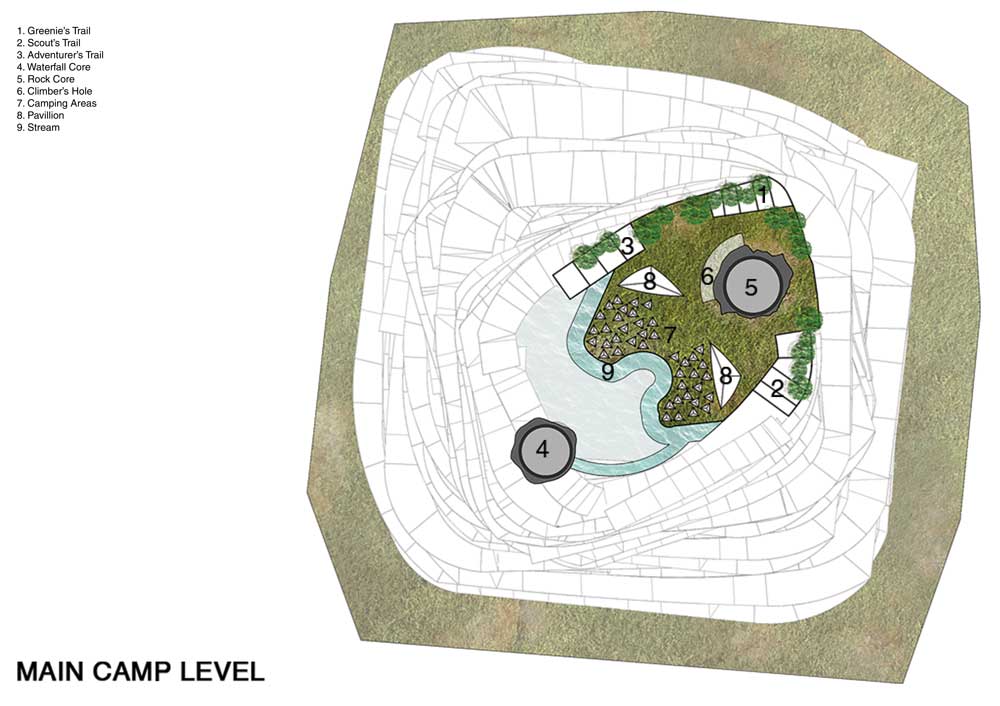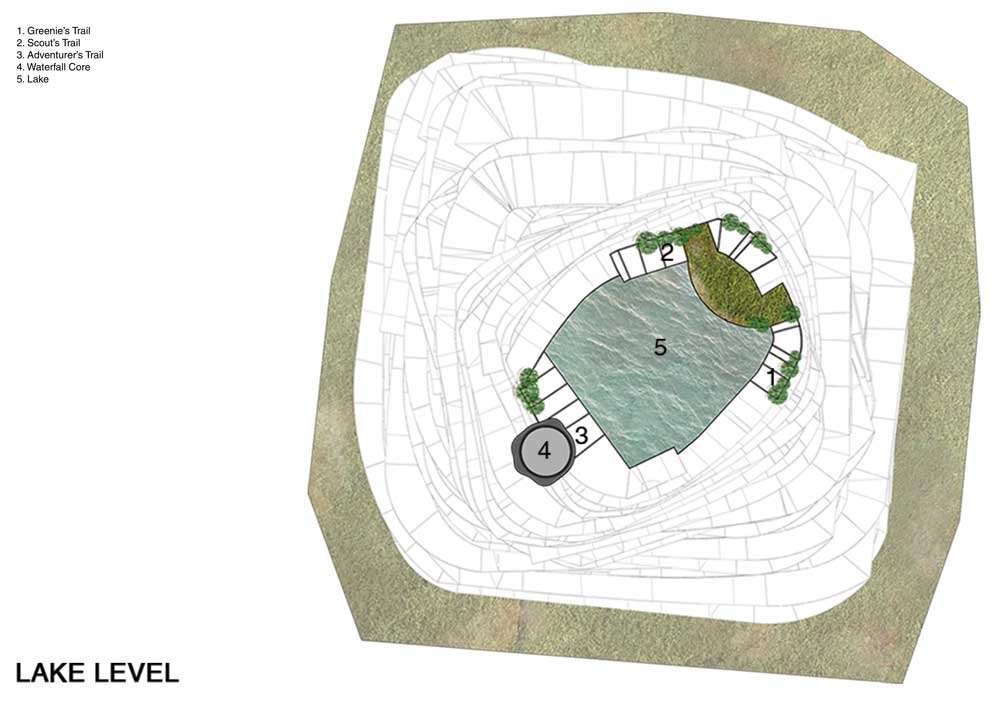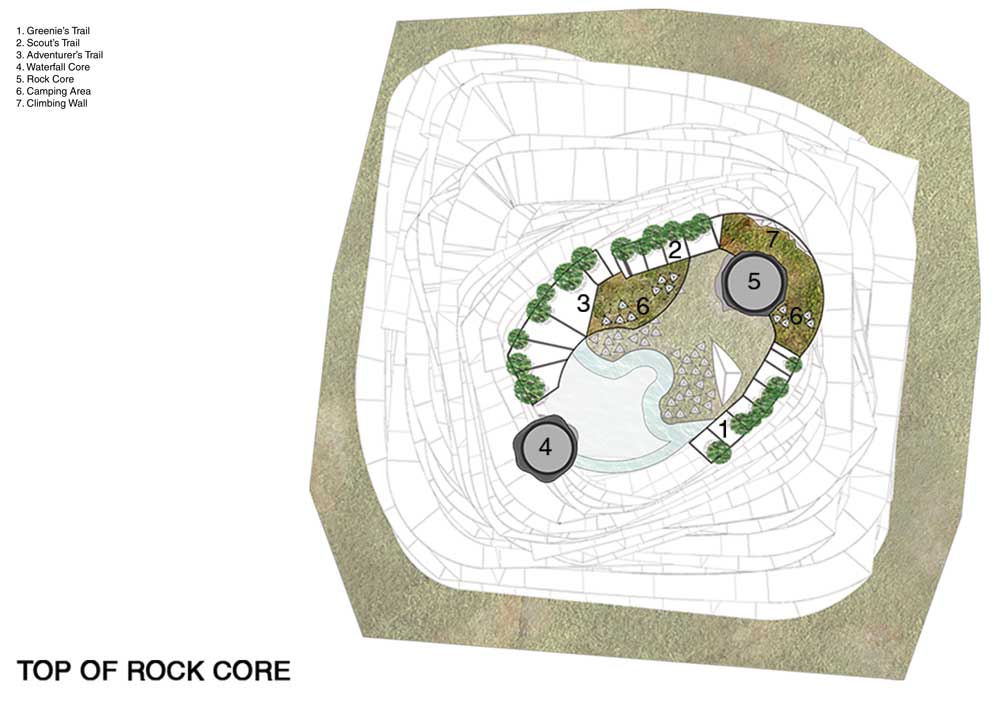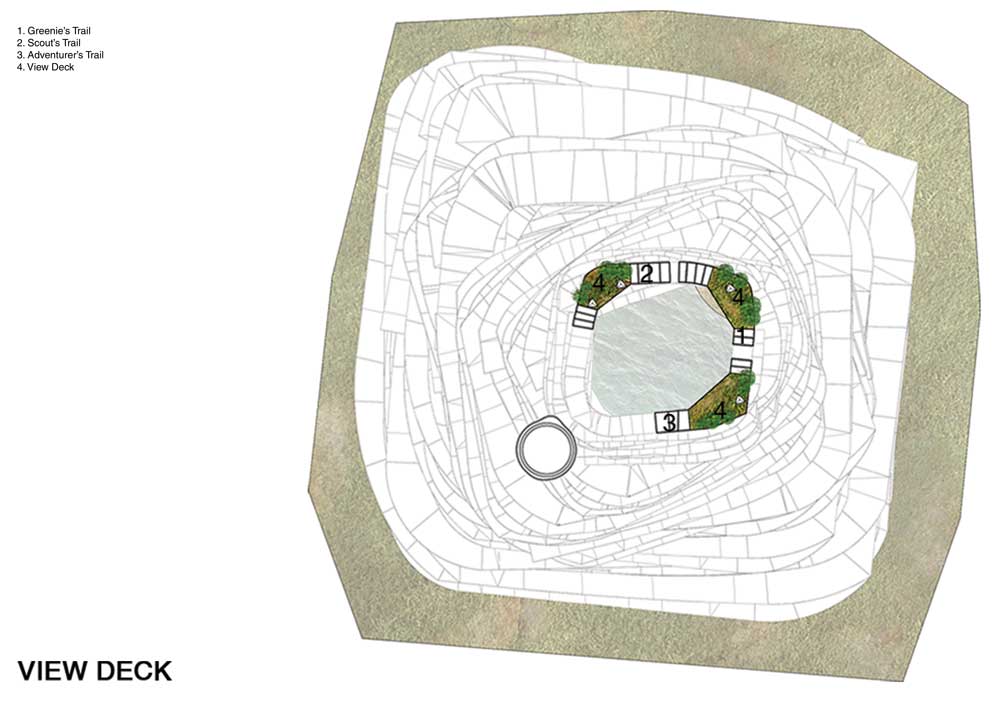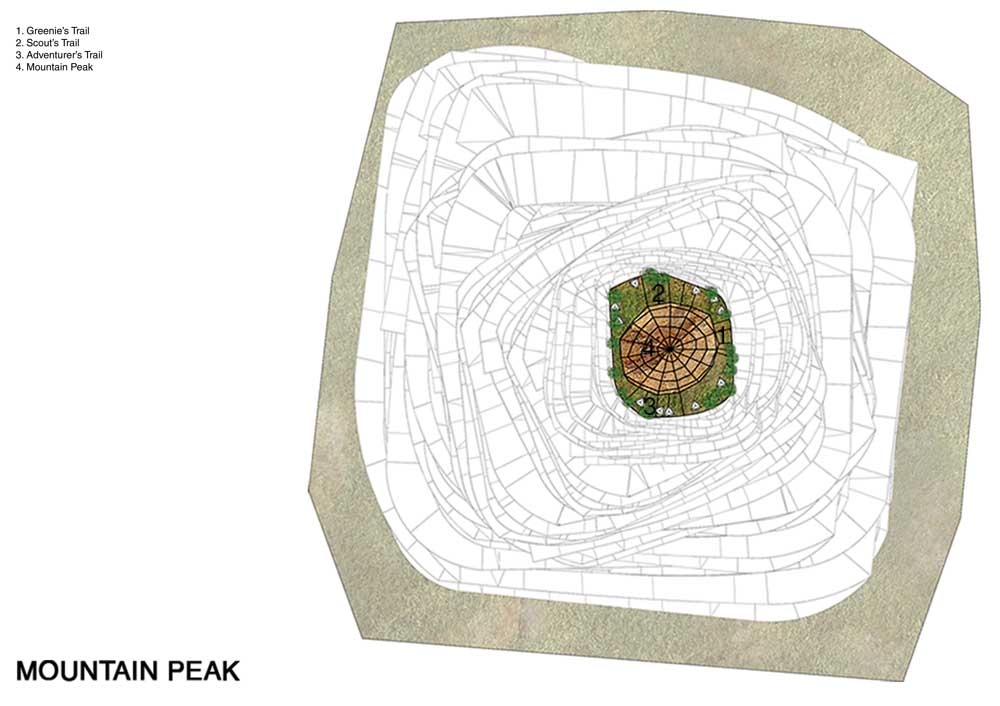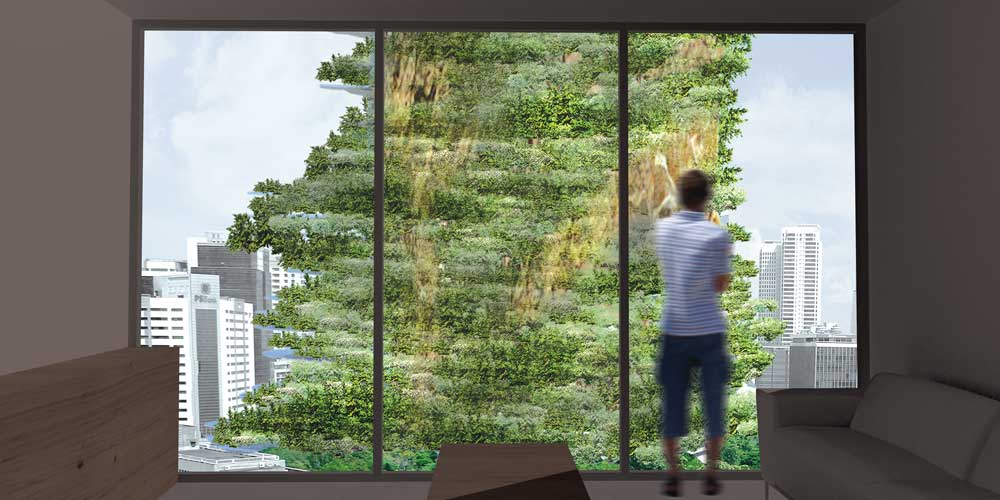Public spaces are shrinking oases in the shadows of skyrocketing towers and inhospitable built environments that continue to spread and densify across our urban landscapes. By taking away our public parks and open spaces where people may enjoy the company of other people, we reduce the humanity of our cities. People crave life in the suburbs where they may still breathe fresh air and delight in nature, but living out of the city means longer commutes to their schools, places of work, and businesses. As it is, our public transport system and infrastructure are ill-equipped to convey the 12 million people of Metro Manila and the millions more traveling to and from the metropolis and outlying provinces. What if we could re-introduce the hectares of lost public open space and nature back onto the remaining small oases of our urban landscapes? Our proposal, Exterria, or Extreme Terrain, does just that.
Design Concept
The structure is a multi-layered artificial mountain. Adventurers start at the base where they choose their path—on foot or bike and level of difficulty. The distances covered would vary, as would the terrain, interspersed with relaxation and socialization areas. There would be four structural cores supporting the hollow interior, three of which would be climbable and of different slope, material, and tropical vegetation. The fourth core rises to the waterfall at the top of the tower, which is the irrigation system for the flora along the nature trails. The fourth core’s hollow interior functions as a bungee-jumping void wherein the bold and daring could leap off from a high point and thrill at the long drop. The mountain tower would be open to the elements of nature for the plants—medicinal herbs, edible plants, and small trees—to be nurtured by the sun and rain and for the people to relish an authentic experience of spending time outdoors. Those plants located away from the reach of sunlight and rain would get their nourishment from ‘grow lights’ and slow-drip irrigation hoses. As the adventurer attains higher and higher elevations, the trails become more challenging, and the environment transports them further away from the city until they truly feel one with nature.


For our proposal, we chose the Ayala Triangle, a semi-public open space in Makati City slowly being eaten up to make way for commercial establishments. Ayala Triangle is approximately 1760 square meters in area. it has an existing built area of 960 square meters or around 55 percent of its footprint.
The 250-meter high Exterria will add 85,000 square meters of public space, which represents an increase of public space by 4800 percent. Imagine over eight hectares of nature in which people can walk, bike, run, jog, climb, camp, bungee-jump, and go nature watching or star-gazing!
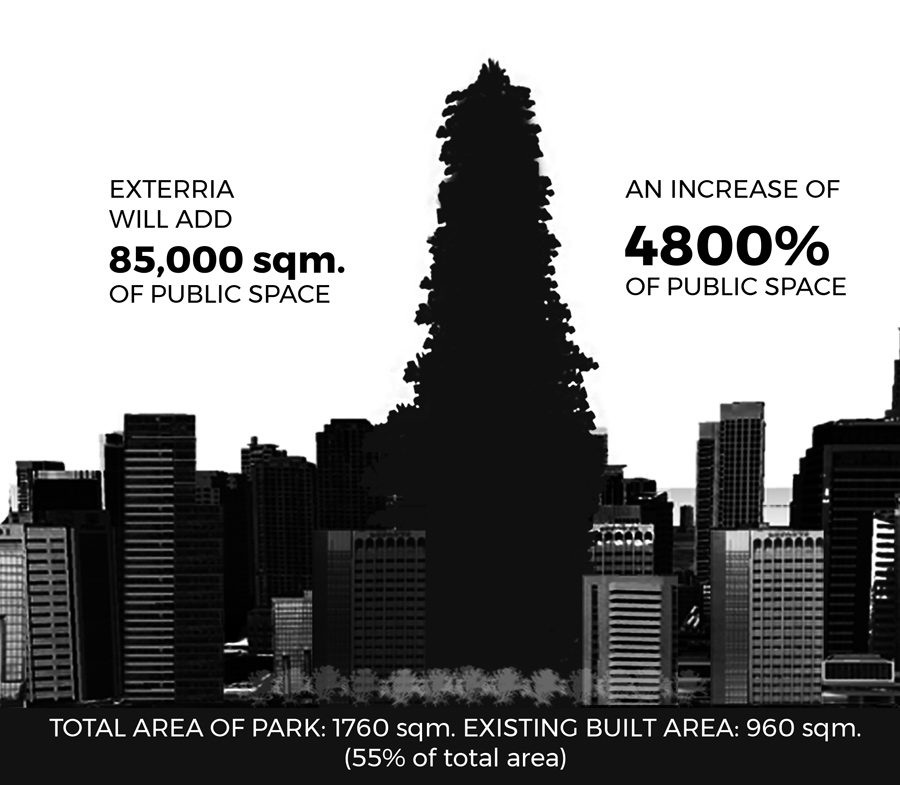
Core diagram
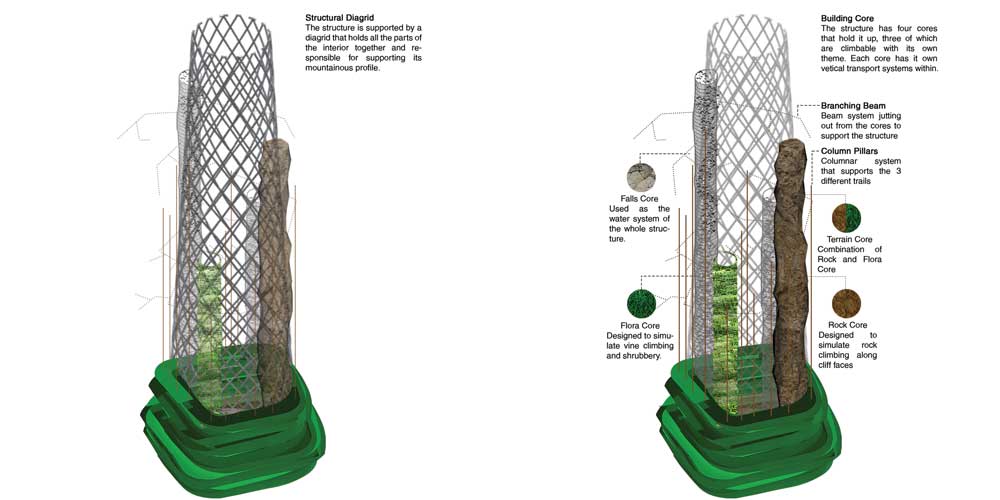
Exterria Features
- The intertwining ramps will house the irrigation system and vessels that pump in water and nutrients to the plants and protect them from high winds and typhoons.
- The ramps are 10 meters in width, each flanked with 3-meter-wide plant vessels on both sides; these vary in depth from 1 to 1.5 meters, just enough for planting material to hold moisture and nutrients and to absorb decaying leaves and the like. They will be designed so plant roots shall twirl round and be anchored onto the structure for stability. As the skeletal framework keep the flora safe during strong winds, the vegetation, in turn, acts as windbreakers to protect the people inside the structure. The plants are the living architecture of Exterria which makes the structure alive and the structure is one giant vessel that holds and protects them.
- Approximately 50,000 square meters will be covered by indigenous flora—some 4000 trees, 15,000 shrubs, and ground cover.
- The waterfall core shall be divided into five 55-meter vertical sections across the 330-meter tall tower with each division holding 2.5 million liters of water equivalent to the amount of water in an Olympic size swimming pool circulating through the various levels keeping the flora hydrated creating a scheduled continuous sustainable cycle in the whole structure. The planned hydration creates a misting effect—a spectacle for people to enjoy.
Layer diagram
Exterria Structure Components
1. Three intertwined spiraling ramps – Trails covered with grass, earth, or lightweight stones for hiking, jogging, and biking, each with different levels of difficulty, namely:
a. The Greenie Trail – for newbies who are going on their first trail experience or who just want a leisurely walk on gentle gradients
b. The Scout’s Trail – for experienced individuals who wish to have a challenging trail experience on medium-slope slopes.
c. The Adventurer’s Trail – for competitive and experienced individuals who want the challenge of steep gradients.

2. Trail modules – The ramp trails are differentiated by modules according to the activities one may do on each module:
a. Base trail module – Three intertwining artificial paths distinguished by their level of difficulty depending on the interest of the adventurer. This module signifies the beginning of the trail.
b. Auxiliary modules – Additional modules of varying terrain with rest stops to denote distance traveled and to give adventurers a chance to appreciate where they are.
c. Top-off modules – The most challenging modules; once completed one can say they have conquered Exterria.
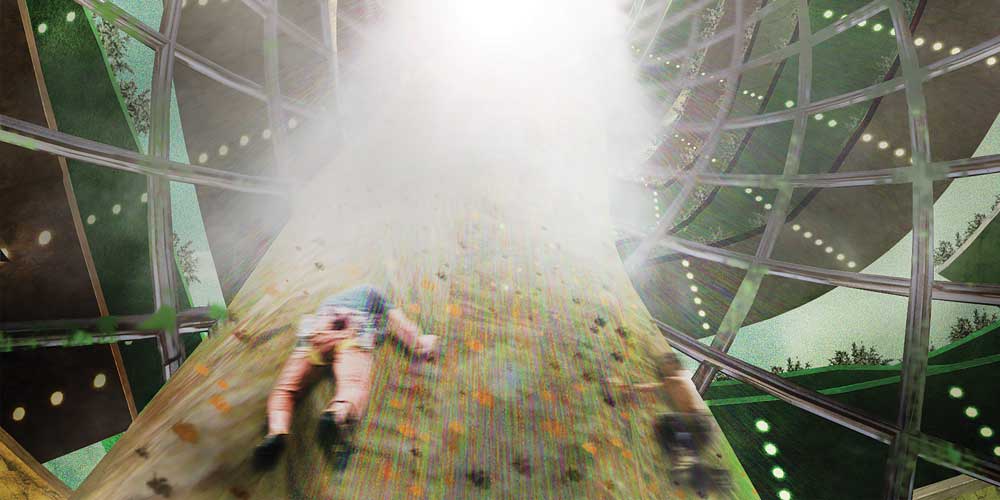
3. Structural diagrid – The structure is supported by a diagrid that holds all the parts of the interior together and forms the mountain-like profile.
4. Four structural cores – These hold the skeleton of the structure together as well as house the elevators to access the top levels of Exterria, namely:
a. Waterfall Core, which houses the water system of the whole structure
b. Flora Core, which is covered with vines and moss, for vine climbing
c. Rock Core, for rock climbing along cliff surfaces
d. Terrain Core, a combination of the Rock and Flora Cores.
5. Flora – The ramps host the vegetation growing on the structure, which bind together to become the living architecture growing along the intertwined trails.
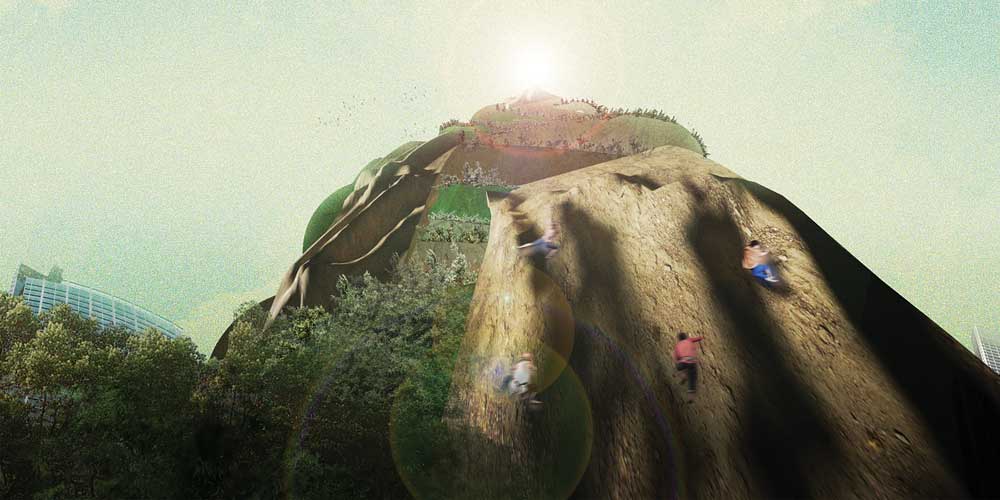
The Peak is the highest point of Exterria, which one can only reach after surmounting various obstacles.
Extreme Exterria
As you go up the intertwined spiraling ramps, the variety of the flora and textures of the paths offers varying views that make each scenery interesting. Pockets of relaxation along the three trails allow people to catch their breath, relax, and socialize.
Upon reaching a certain height and distance, adventurers reach the Achievement Zone, a place people will strive to achieve as it becomes a rite of passage. Further up is The Peak, the uppermost part of Exterria only a few individuals will be able to reach, and hence, a most rewarding experience when the most competitive of adventurers successfully scale it.


Conclusion
Instead of ranting about how our cities lack public space, we should focus on how to maximize and generate more open public spaces for people. The Exterria, if we had the vision, guts, and determination to build something like it, would be a boon to the city and people that host it. It would be an escape for the people trapped in concrete, steel, and glass towers, a magnet for tourists, a wondrous environment for children and families to visit, a living architecture for a city gasping for breath. ![]()
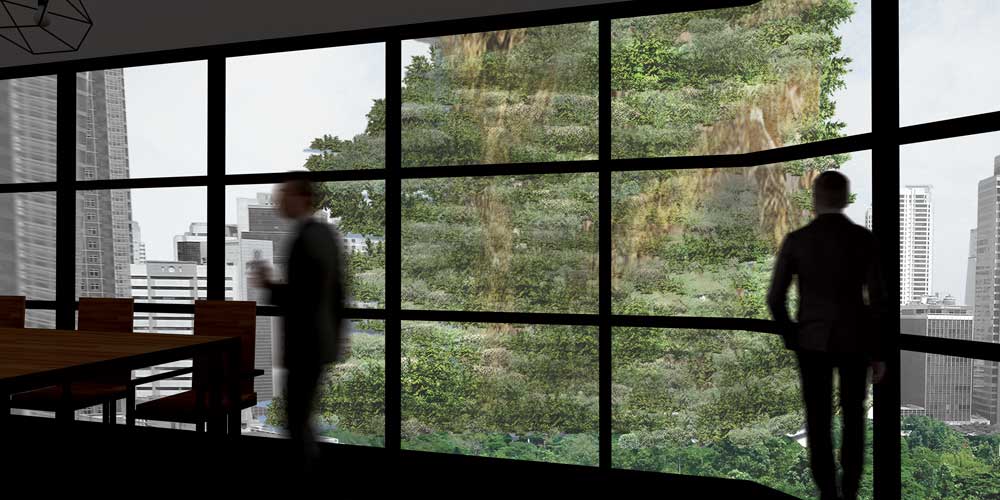
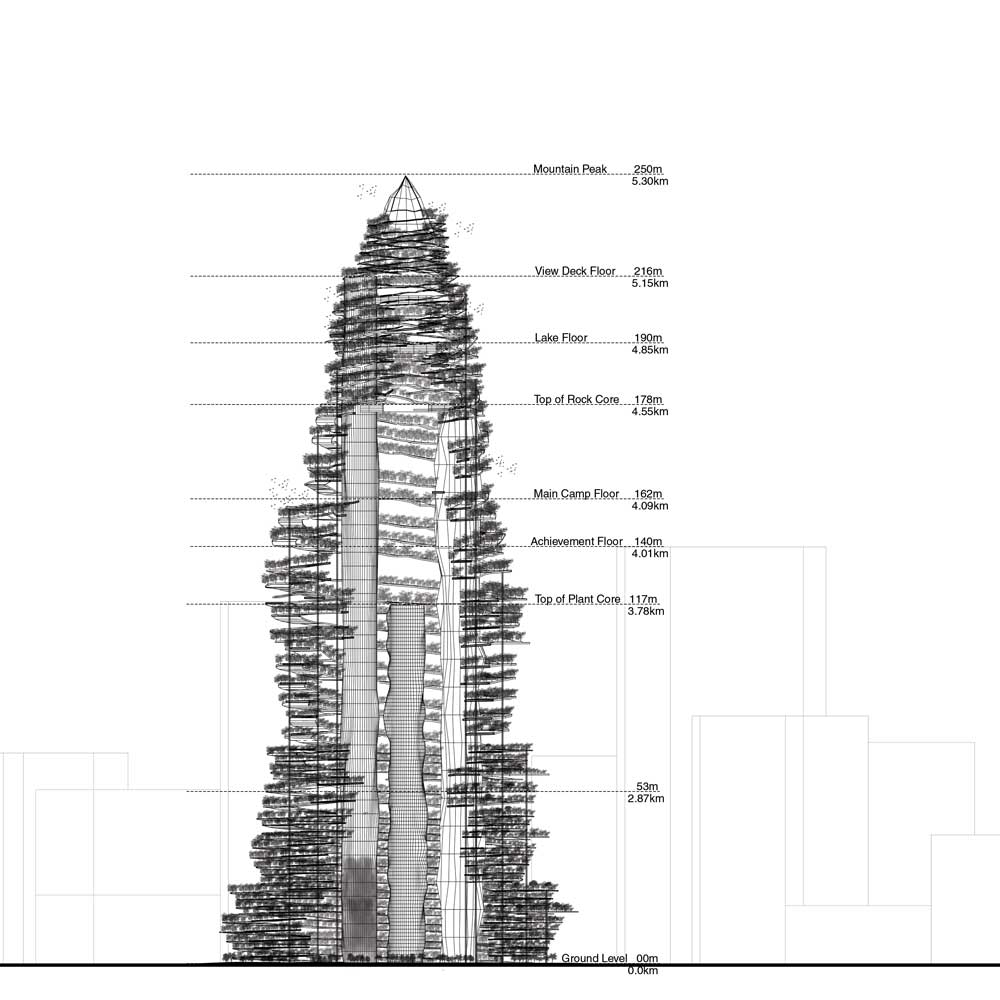
Floor plans
